The epitome of dark myths and legends began deep within the wide forests of Romania, a country that was once harsh and full of mystery. Natural disasters, disease, wild animals, and war always felt too close to home and threatened to decimate the lives of the Romanian folk. Seemingly powerless against these terrible forces, the Romanian people created tales of monsters and heroes to give them hope and understanding. Earthquakes occurred only because your lack of faith erodes the Pillars that hold up the world. It was a vicious Pricolici that killed your cattle and a blood-sucking Strigoi that caused your mother to grow ill. Long ago, these superstitions were what helped the Romanian people deal with the harshness of life, as well as providing entertainment around a fire on a cold, winter’s night. All things begin and end with a story.

Creation
Where to start? Genesis… the creation stories in Romanian folklore are numerous and varied, from its ancient, Indo-European roots with Brother and Non-brother, to a Christianization of the tale involving God and His perpetual antagonist, Satan. This is my own version of the Romanian creation story with elements taken from all. This is a tale of two friends, bored with the eternal waters of oblivion, who try to bring their talents together to build a world.
 In the Beginning
In the Beginning
In the beginning of beginnings, before time and matter, there was a boundless ocean called Apa Sâmbetei. For time out of mind the ocean was as still as a mirror, until a ripple appeared, as if something was blowing on the surface of the primordial waters. The ocean churned and bubbled with the waves, creating foam. From the froth suddenly sprouted a tree of massive proportions. Crawling on the tree’s branches was a single butterfly and a lone worm. The butterfly shed its wings and transformed into a beautiful, shining boy, lighting up the blackness around him. As if to mimic the other, the worm also wriggled and writhed until it had shed it’s body, revealing yet another boy, clouded with darkness. “Brother!” the second boy exclaimed with joy and moved to embrace him, but the first boy grimly shook his head. “You are not my brother, for I can have no equal. I shall call you Nonbrother.”
Sea
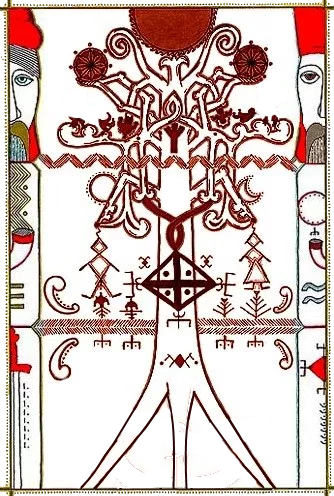
Together, the Brother and Nonbrother, or Fîrtat and Nefîrtat, took it upon themselves to create the world. Fîrtat asked Nefîrtat to dive down into Apa Sâmbetei and retrieve sand from the bottom of the sea, for he could not swim. Three times Nonbrother descended only to have the earth slip from his fingers. The third time that Nonbrother failed, Brother told him to clean the mud from under his fingernails and from that he would create land.
Land
Fîrtat moulded an island under the branches of the cosmic tree and laid down to rest. While Fîrtat slept, Non-brother saw his chance to get rid of his brother and create his own world. Knowing that Fîrtat could not swim, Nefîrtat tried to roll him into the sea to drown. Nefîrtat pushed his brother in every direction but wherever Fîrtat was rolled, land would appear beneath him. For a long time Nefîrtat tried to drown his friend until land had spread to each corner of the world. When the Brother awoke he marvelled at what the Nonbrother had done, but saw that the earth was much too big. Combining each other’s strength, the two beings squeezed the earth, creasing the land– forming mountains and hills, lakes and swamps– until finally it was compressed into the perfect size.
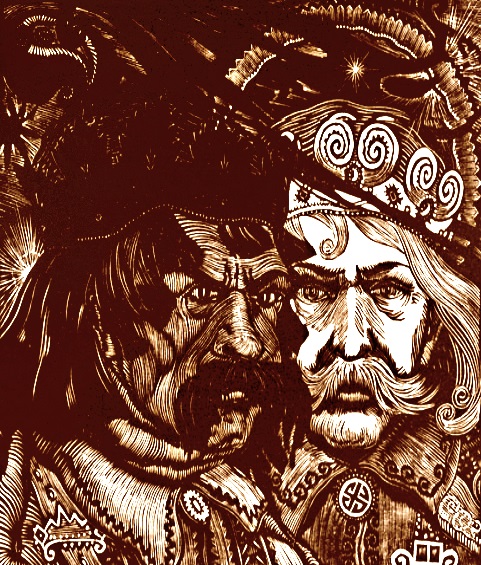
Sky
The two divinities thought they should build the sky, a firmament to separate the waters above from the waters below. Setting it upon the highest branches of the cosmic tree, Fîrtat embedded the stars, the moon and the sun like jewels in the sky. Due to a slight miscalculation, however, the sky was too heavy for the earth and the land began to sink into the waters. Nonbrother quickly dove into the ocean and constructed four pillars, supported by four cosmic fish, to hold up the earth.
Life
Now that there was light shining down upon the world, the cosmic tree bloomed and bore fruit which Brother and Nonbrother used to shape all manner of men and creatures that walk this Earth. While Fîrtat created animals of beauty and practicality, Nefîrtat, with his wild imagination, experimented creating giants, shape-shifters and other strange beasts. In the beginning, everyone got along together in peace, but over time, evil seeped into the world from below and the troubles arose.
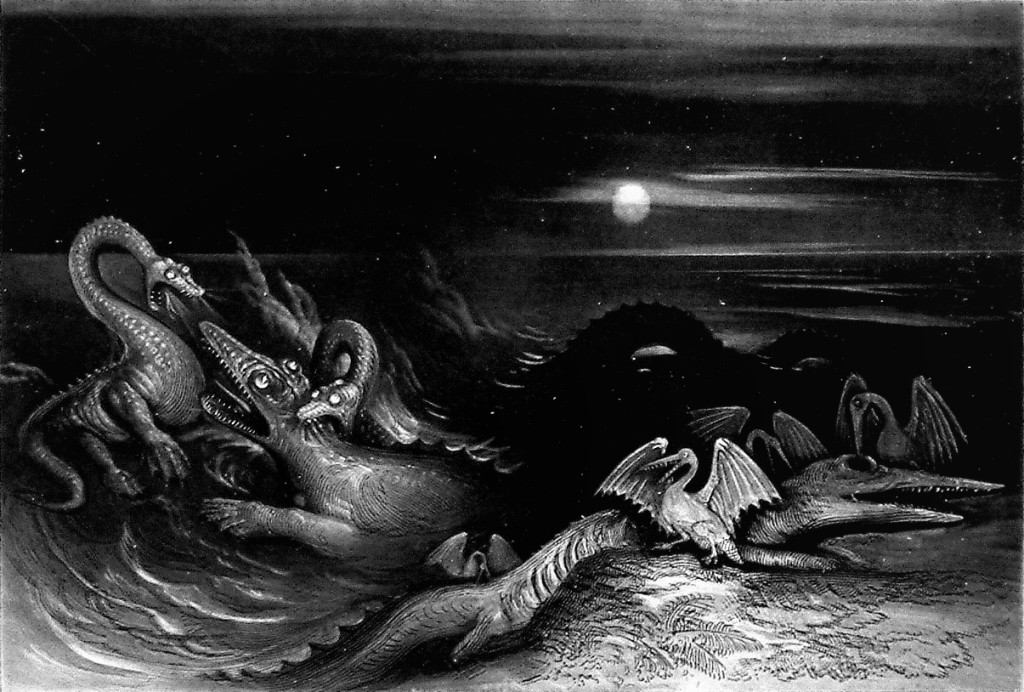
Monsters
The idea of vampires and werewolves, popularised by American cinema classics such as “The Wolfman” and “Dracula”, actually originated from ancient, Romanian superstitions about undead, bloodsucking, shape-shifting horrors–nightmares that seemed very real at the time. Fears of illness, poor crops, or foreign enemies were transformed into invisible devils that could be warded away with signs, sigils, or even strings of garlic.
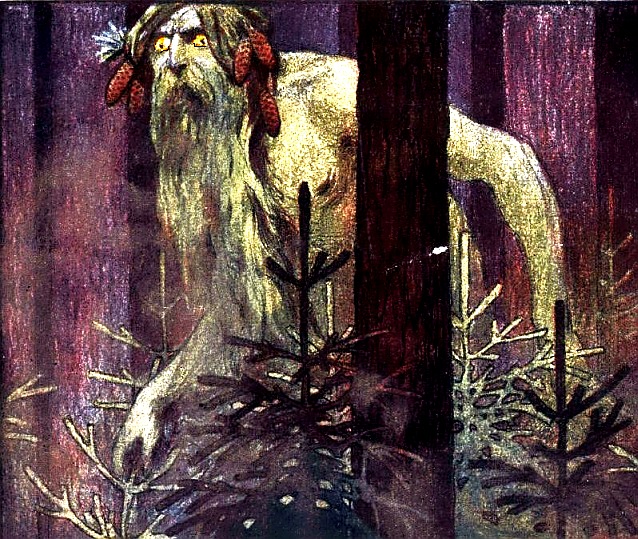
Uriaș
The Uriaș were the first people ever created. These giants were incomprehensible in size; some of them had heads as big as mountains and with a couple steps they could reach any country they desired. Despite their powerful stature, the giants were friendly and, in bygone times, humans and the Urias lived together in peace. One day, however, a terrible war ensued between both races and atrocious crimes were committed on each side. It was at this time that God (or The Brother) decided to start over, flooding the world with the primordial waters, killing mostly everyone on Earth. Among the humans, only Noah and his family survived on the Ark. Legends say that Urias burial mounds contain a massive horde of riches and can be found on the eve of Christmas, Easter, or St. George’s Day, when magical fires burn above their graves.
Strigoi

A common cause of illnesses, the Strigoi is a ghastly creature that likely gave birth to both the vampire and the werewolf. This undead monster can shape-shift into any animal, turn invisible, and has a insatiable thirst for blood. There are several recorded accounts of Strigoi attacking people over the centuries including a more recent one, in 2004, where a girl swore to have been visited by her dead uncle. As a precaution, her family banded together, dug up the coffin of the late uncle, and cut his heart out. Afterwards the family burned the uncle’s remains, mixed his ashes with water, and drank it– as was the traditional way to destroy a Strigoi. Old superstitions die hard in Romania, and even today rural villagers tend to stake the recently deceased through the navel for good measure.
Ielele
The Ielele are magical beings who live in isolated areas deep in the wild. These fairies are said to dance naked in the moonlight with bells on their ankles, and like the Sirens of Greek myth, can be irresistible to men. What could be wrong with that, you may ask? Well, if you are seduced by them, you may disappear forever without a trace… but what a way to go!
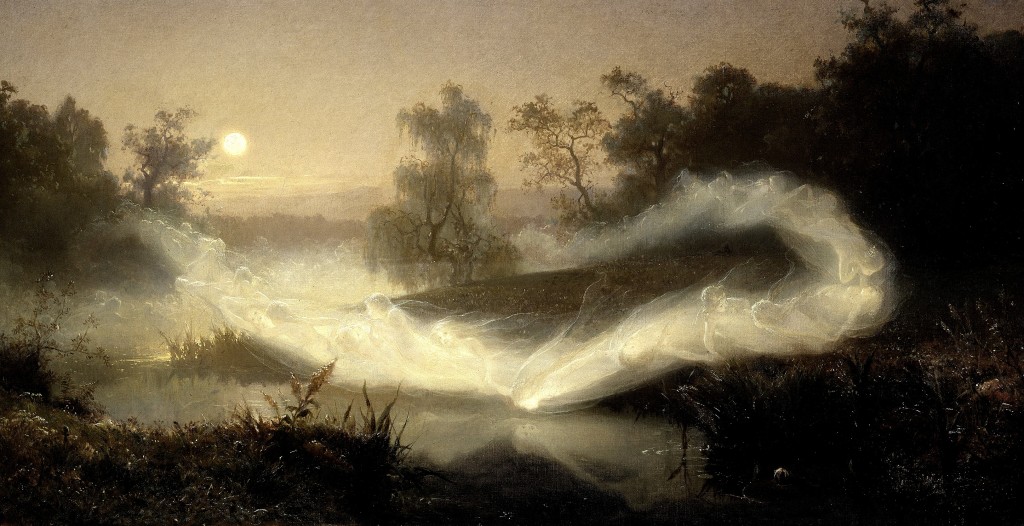
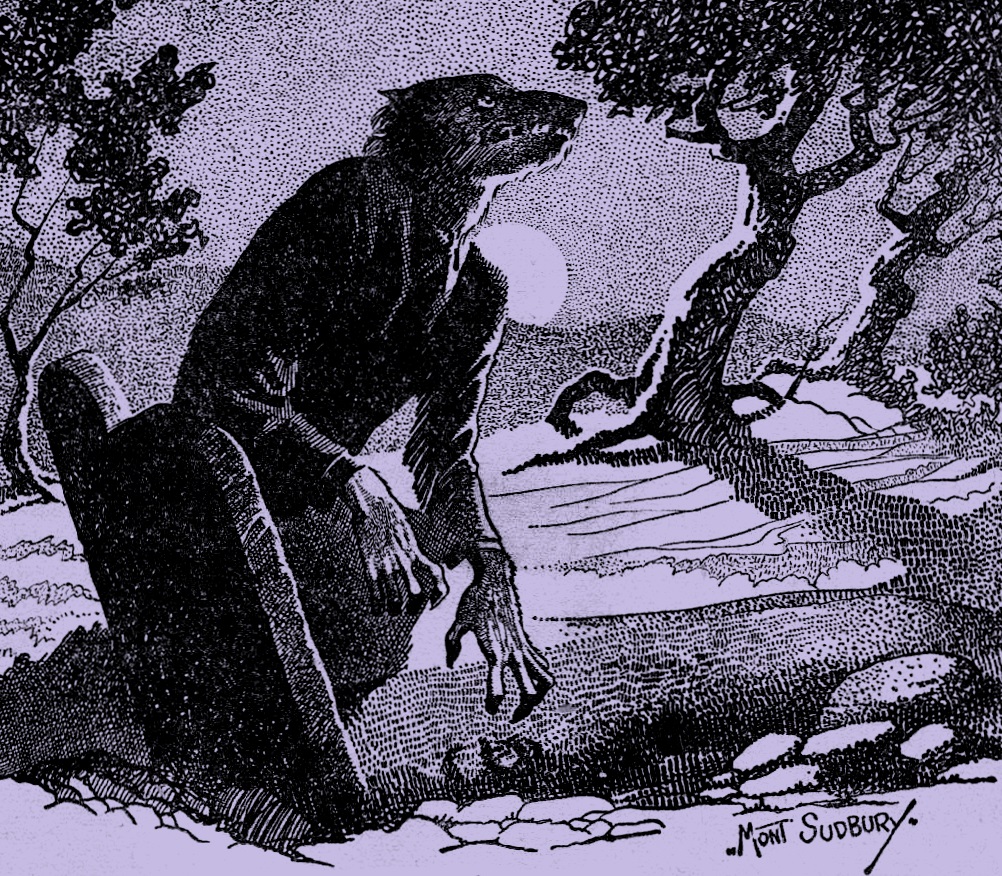
Pricolici
Like the Strigoi, the Pricolici are undead monsters but they always take the form of a giant wolf. Violent, murderous men are said to return from the grave as Pricolici to continue harming living people. Even in modern times, Romanians claim to have been attacked by abnormally large wolves that were, indeed, Pricolici. In a country that still has the largest population of canis lupus in Europe, it’s not hard to guess how this mythical creature sprang to life.
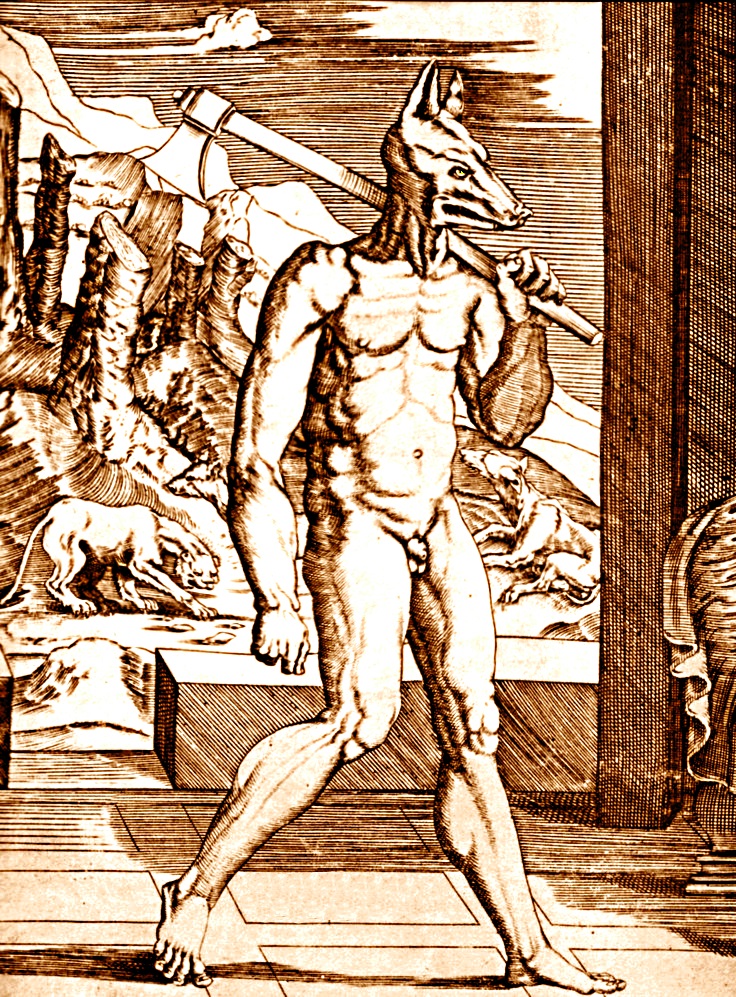
Căpcăun
The Căpcăun is a dog-headed, man-eating ogre who kidnaps innocent children and young ladies. They sometimes have one too many limbs and heads. Many heroes have faced the Căpcăun in an attempt to rescue a fair maiden, but most often they fail miserably to the ogre’s evil tricks. This miserable creature lives all alone in a den that reeks of death and will not hesitate to attack anyone who passes by. The name “Căpcăun” may actually derive from an eastern term meaning “Chieftain”. This “Kap Khan”, or “Great Khan“, may be an embodiment of the Romanian’s fear of eastern enemies like the Mongols.
Heroes
For 1000’s of years Romania has had to deal with numerous migrating races such as the Huns, Avars, Bulgars, and Cumans overrunning their territories, and then in the late Middle Ages the powerful expansion of the Ottoman Turks. There has always been problems from the east, but in these times of trouble there have been heroes to stand up for the Romanian people.
Vlad the Impaler
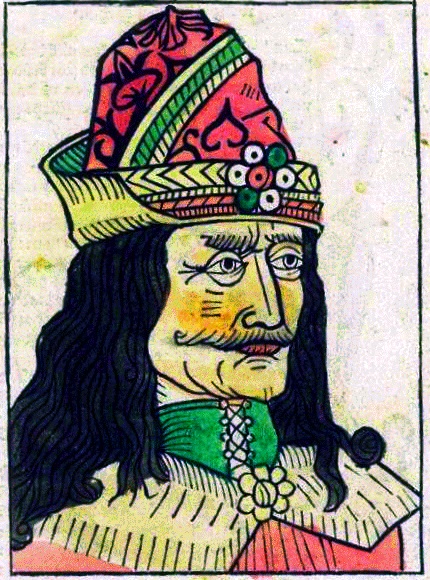
Amongst the many heroes that fought to protect Romania from foreign enemies, there are none greater than Vlad the Impaler, Prince of Wallachia, Drăculea. Although vilified by the western world, and further transformed into a monster thanks to Bram Stoker’s “Dracula“, Vlad Tepes (Impaler) is still considered a folk hero in the eyes of Romanians. Unlike the Dracula of fiction, Vlad the III was a ruler of Wallachia, not Transylvania, and stood up for his countrymen during the incipient Ottoman conquest of Europe. Drăculea’s father, Vlad II Dracul, ruled Wallachia before him and was knighted under the Order of the Dragon, a group dedicated to protecting Christian Europe from the Muslim Ottoman. The name “Drăculea” actually means “son of the Dragon” referring to Vlad’s father, and was misinterpreted by western Europe as “Son of the Devil”. The stories of Vlad the Impaler staking his people are true; he was a harsh ruler and his favourite form of punishment was to stick criminals alive on top of a tall stake and let gravity do its part, giving them a slow and painful death.
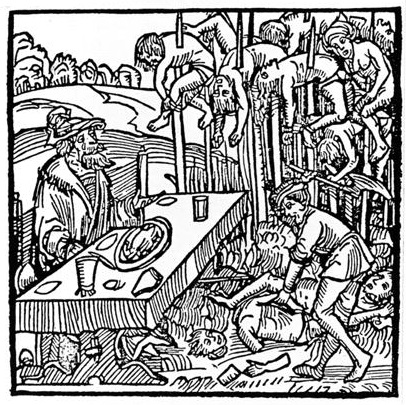
In 1495 a crusade was called against the Ottoman Empire, led by the Hungarian King Matthias Corvinus. Vlad allied himself with Mathias in an attempt to protect his people in Wallachia, which had been declared part of the Ottoman Empire. When emissaries of the Ottoman Sultan Mehmed II arrived to collect their tribute, as they had done from Vlad’s father before, Dracula responded by nailing their turbans to their heads. From then on Vlad the Impaler organised many brilliant and successful attacks against the Ottomans, who often vastly outnumbered Vlad’s men. One of his greatest victories was when Vlad and his men, disguised as Turkish cavalry, attacked Ottoman war camps throughout Bulgaria, taking them completely by surprise. Afterwards, in a letter to Matthias Corvinus he wrote:
“I have killed peasants, men and women, old and young, who lived at Oblucitza and Novoselo, where the Danube flows into the sea… We killed 23,884 Turks without counting those whom we burned in homes or the Turks whose heads were cut by our soldiers…Thus, your highness, you must know that I have broken the peace.”

Despite his clever military tactics, Vlad III was eventually overrun by the sheer magnitude of the Ottoman army and had to leave Wallachia to the Turks. Never giving up, Vlad retreated to Transylvania to make battle plans with Matthias Corvinus, biding his time. After Matthias agreed to give him Hungarian support to retake Wallachia, Vlad confidently started on his way home. Unfortunately, he was betrayed by King Matthias, ambushed and imprisoned for many years. Matthias claimed that Vlad was a traitor to Christendom, although in reality King Matthias Corvinus wanted to abandon the anti-Ottoman crusade, hence removing Vlad, and focus more on gaining power in central Europe.
When Vlad was released from prison, he immediately set off to Wallachia, defeated the Turkish garrison, and reclaimed his throne. Vlad III ruled Wallachia for only two more months before a large Turkish army arrived to destroy him, once and for all. Vlad Tepes died in that ferocious battle, and his head was sent to Constantinople as a war trophy.
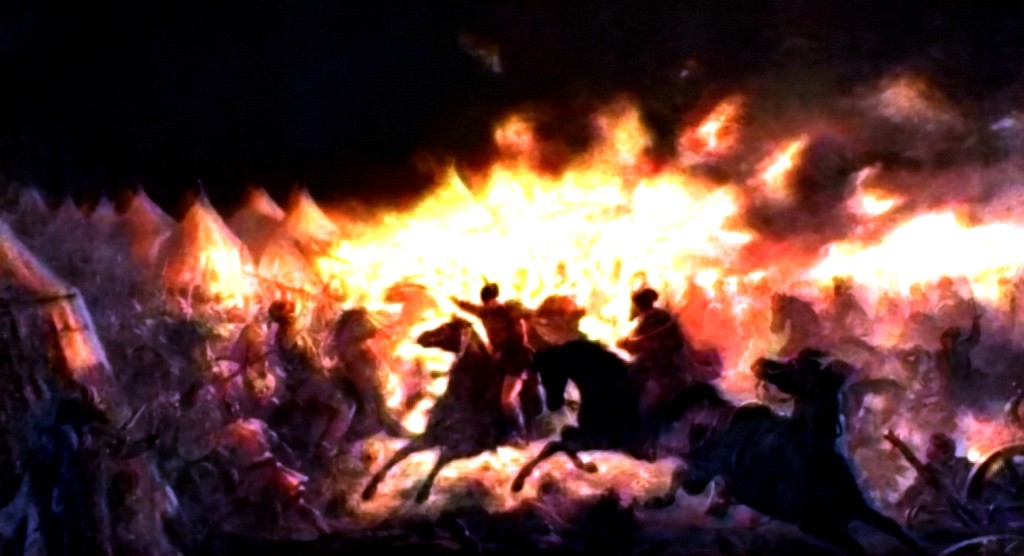
Although in the end Vlad III failed to halt the tide of Ottoman forces, the memory of his defiance, against a far more powerful adversary, remains in the minds of the Romanian people, and his legend lives on.
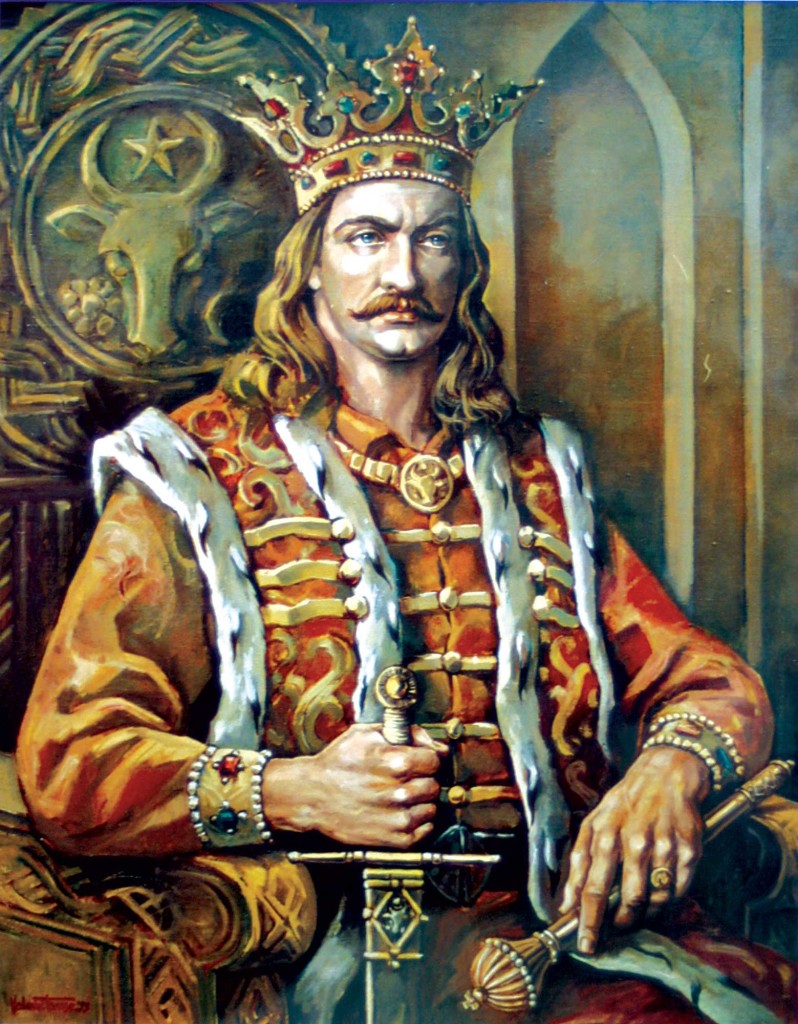
Stefan the Great
Stefan the Great, King of Moldavia, was also famous for his long resistance against the Ottomans and even fought together with his first cousin, Vlad the Impaler, in several battles. Against the Turks, Stefan was victorious in 44 of 48 battles, managing to protect the rest of Europe from the Ottoman expansion. Stefan the Great was said to be extremely pious, celebrating every victory by fasting on bread and water and giving all credit to God. In his life he built 44 churches and monasteries, one for each successful battle, and after death he was canonized, declared as “Saint Volvode Stefan the Great”.
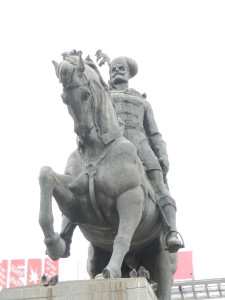
Mihai the Brave
Like a vision of King Arthur uniting the tribes of Britain, Mihai the Brave ruled all three principalities of Romania for the first time in history: Moldavia, Transylvania, and Wallachia. Although the union of these separate kingdoms only lasted 6 months, up until the nobles revolted, Mihai is still thought to be one of Romania’s greatest, national heroes. Mihai’s legacy was said to be a precursor to modern Romania, a country that was unified again approximately three centuries after him.
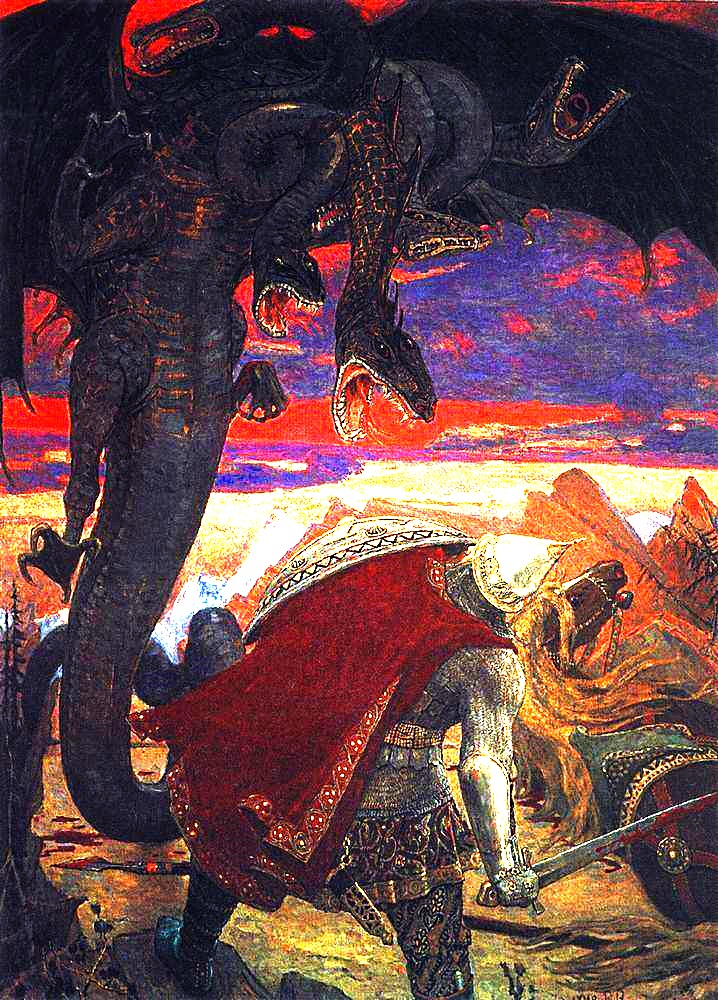
Făt-Frumos, Beautiful Son
One hero that never left the storybooks was Făt-Frumos (Handsome Son), the greatest figure in Romanian folklore. In the world of fairy tales, Făt-Frumos is the ideal persona of a hero who preforms good deeds, help creatures in distress and faces all odds in his adventures. One popular story, “Youth Without Age and Life Without Death“, describes Făt-Frumos’ quest to gain immortality. The basis of this story can be found in much older myths such as the Japanese fable, “Urashima the Fisherman,” from 713 AD or even the Mesopotamian epic “Gilgamesh” from 2100 BC. Such tales never die.
The story begins with a pregnant Queen whose child, just before the birth, begins weeping uncontrollably. In order to stop the baby from crying, the King offers him kingdoms, princesses, and all the good things in the world. Nothing he says seems to stop the baby’s crying, so finally the King promises, “Be quiet, my son, and I’ll give you youth without age and life without death.” With that, the child finally quieted down and was born into the world. The Handsome Son grew up to be quick-witted, wise and daring, and on his fifteenth birthday he finally asked his father to grant him the immortality that was promised to him. The King said that he had no power to fulfil his pledge, so Făt-Frumos made an oath that he would scour the world for the secret of immortality, or die trying. The King, Queen, and all the nobles begged him to stay as his parents were growing old and they would need him to rule the kingdom, but Făt-Frumos would not listen to their pleas.
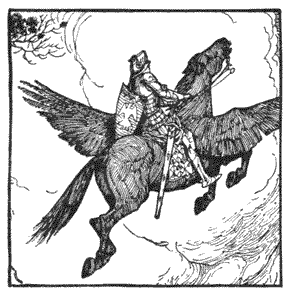
On his adventures, Handsome Son acquires a talking, flying horse and fights his way past many horrible monsters (including a giant woodpecker) until they finally come to the palace of Youth without Age and Life without Death. The fairies that live in the palace take a liking to Făt-Frumos and ask him to stay with them forever, an offer to which he hastily agrees. Although the fairy kingdom was a paradise and he had achieved his goal of immortality, after time out of mind Făt-Frumos begins to long for his home and his parents. The fairies cried and told him not to go, but the Handsome Son made a decision to leave the palace of eternity and find his parents. As he journeyed home Făt-Frumos grew steadily older and older, until his was a crooked, aged man with a long, white beard. The no-longer Handsome Son cried in despair when he came to find that his castle, where he grew up, was in ruins and long ago abandoned. Slowly, in sadness, the Făt-Frumos searched every room until he came to the place where he was born.
A thin, cracked voice greeted him, “You are most welcome! Had you been much later, I would have perished myself!” With that, Death gave Făt-Frumos one slap and he fell down dead, turning instantly to dust.
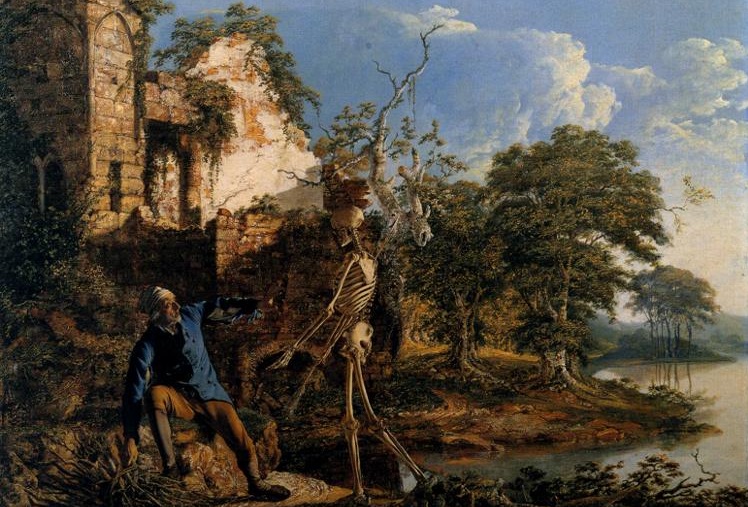
 Romania’s folk tales remind us of a time out of mind when heroes brought order to chaos, when the dark forest still withheld its secrets, and there were simple fables to answer the world’s ultimate questions. Stories are still being passed down through the generations, but they are dissolving in our fast-paced, modern age; where people don’t have the time nor interest in listening and letting their imaginations unfold. The world has moved on, but sometimes, when you hear the wolves howl at night, or feel a cold wind brush your skin sending shivers down your neck, your soul remembers…
Romania’s folk tales remind us of a time out of mind when heroes brought order to chaos, when the dark forest still withheld its secrets, and there were simple fables to answer the world’s ultimate questions. Stories are still being passed down through the generations, but they are dissolving in our fast-paced, modern age; where people don’t have the time nor interest in listening and letting their imaginations unfold. The world has moved on, but sometimes, when you hear the wolves howl at night, or feel a cold wind brush your skin sending shivers down your neck, your soul remembers…
Sources
Chelariu, Ana R. (2013). Metaphors and the Development of Mythical Language With Examples from Romanian Mythology. International Association of Comparative Mythology Conference, University of Tubingen.
Columbia University Press. (2016). Michael the Brave, The Columbia encyclopedia, 6th Edition. New York, NY: Columbia University Press.
Cosma, Aurel. (1942). Cosmogonia poporului român (The Cosmogony of the Romanian People). Bucharest: Tipografia Ziarului “Universul”.
DEX. (1998). Dicționarul explicativ al limbii române. Romanian Academy Publishing House, Bucharest. DEXOnline.ro.
Dragomir, A.M. (2012). Myth in Romanian Folklore: Themes, Motifs and Archetypes. In Nipissing University’s Fifth Annual Undergraduate Research Conference.
Eagles, Jonathan. (2014). Stephen the Great and Balkan Nationalism: Moldova and Eastern European History. I.B. Tauris.
Eliade, Mircea. (1976) Occultism, Witchcraft, and Cultural Fashions. Essays in Comparative Mythology. Chicago: The University of Chicago Press.
Florescu, Radu R. McNally, Raymond T. (1989). Dracula, Prince of Many Faces: His Life and his Times. Back Bay Books.
Guiley, Rosemary Ellen. (2004). The Encyclopedia of Vampires, Werewolves, and Other Monsters. New York: Facts on File.
Ispirescu, Petre. The Tales and Stories of Ispirescu. Translated from the Romanian by Ana Cartianu. Murrays Childrens Books, London. First Published by the Ion Creangă Publishing House, Bucharest.
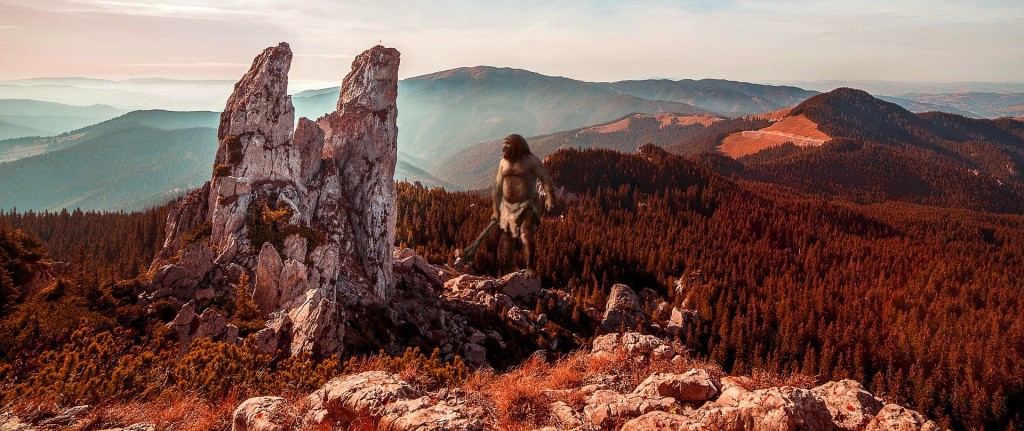
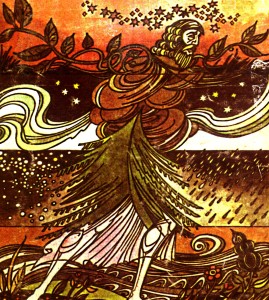

Thanks! This is really cool!
I’m glad you found it interesting! Romania is a wondrous place…
Beautiful!? I was born & grew up in Bucovina NoRo…miss these mysterious places sometime…
I have made a wonderful friend on line. She is Romanian & we talk for hours every day. I thought it only proper that I learn more of her culture. I began here with Mythology. She genuinely appreciates my taking an interest in her Country. Soon I shall broaden my education to your expansive History. It is fascinating, to say the least! I have extended an open ended invitation to her to come & visit me in the USA. Perhaps one day, we will have the opportunity to continue our mutual interests in our respective cultures. Thank you for your very informative postings.
I remember everything. I know.
thank you for this. i’ve been interested in Romanian mythology, folklore, monsters, and heroes for a few years now, and i havn’t found a good source of information until this.
You’re welcome, Grace. Yes, some of the information was a little obscure and difficult to find.The creation myth was the hardest to research because I read at least three different versions from multiple sources: the oldest version was similar to other Slavic and even Norse cosmology, there was a Christian version of the tale, and another which included animals assisting God with the creation of the world.I guess all stories evolve along with culture and traditions over time.
Nice info. I am from Romania and most of what you wrote here I know from when I was little and I heard or read many stories.
Good job.
Thanks Madalin, they are great stories!
Great — Just a comment on Mihai. Revolt was instigated, but he was killed by a legionary payd by the German Kaiser, who had first encouraged him. The hope to let graw a new power against the Turks was apparently soon overshadowed by the worry that this romanian power might be hard to control. Intrigues, diplomacy and power plans were in those time also the real background of “revolt”.
this is bad get a better hobby!!
Thank you Bob for your constructive criticism.
nah, dont listen to him…i absolutely loved this list, your facts are correct and it is very interesting to read. So no, do what you want and do what makes you happy cause that is criticism thats coming from somebody who does not even have a webpage. Keep up the good work!
So i stumble upon this article while looking for Romanian folk stories that i found interesting and never knew about. My family is from Romania and i never was told any of these stories growing up.
I just wanna say excellent job and keep up the great job would like to see more about Romanian folk stories
good job nathanael . big like from me and from romanian people. and trust me romania still have heroes They will come soon 🙂
Hi, this was really interesting, what were your main sources for your research?
Hi Inga,
Upon your request, I’ve included a list of sources at the bottom of the article. My main sources come from Olinescu’s Romanian Mythology and Pamfile’s Romanian Mythology. The Romanian DEX was pretty useful too (https://dexonline.ro).
Good stories never die. Though these may be fading due to the changing times, it’s not–at least in the long term, the very long term— an end to all things good and imaginative. Everything is subject to degradation.
The silver lining is this: As old stories fade, new ones are written; as new ones become older and then they themselves fade, new ones are written. All that ever really changes is the little things.
Good narrative survives forever.
Pretty cool stuff, man. I haven’t even heard if that version of the creation myth and I’m from Romanian and know most of the old folk tales. Cheers, and keep up the good work
Nice overview. Still factual without passion rarely attracts fans. Hard to believe that neither Dracula, nor the Tzimisce clan of the once bestselling White Wolf Inc. Vampire the Masquerade series, inspired any authors & artists to start something better than fuzz about vampire diaries and “Oh, Edward!”. No local version of Elizabeth Bathori either? 😉
Very beautiful wording and great stories. Lest we forget the ages of heroes that had real values,unlike today.
Thank you so much,this is very detailed and you did a very good job!They were all beautiful legends!Please keep it up with the excellent work!
Wow, beautiful looking website!!
Excellent work. I have just visited Romania (Brasov) for the first time and was struck by the country’s beauty. I know Dracula for instance is a corny cliché but you can’t help feeling there are real folk-beliefs in the background.
Hey 🙂 loved the info on Romanian myths. on a side note would you have any further information on Romanian pre Christian art or symbols, I collect traditional tattoos and currently have Anglo Saxon and Nordic. my partner is Romanian so I’m looking to research further any art associated with Romanian myths and legends
thanks 🙂
Hi Adam, I’m also interested in ancient symbolism– I have a tattoo of Vegvisir on my chest. I think what you’re looking for is Dacian symbolism. The Dacians were the ancient culture in Romania/Moldova before they were conquered by the Roman Empire. A lot of today’s Romanian mythology originated in Dacian culture. Hopefully that’s the lead you need to find what you’re looking for.
So, I didn’t grow up in Romania, but i am romanian, and visited many times. You should maybe visit the Transylvania Castle! It’s amazing, and has a lot of historical information.
Hello! This was seriously a joy to read. I have always been interested in the country and tales of Romania. I have some heritage on my Dad’s side and find myself drawn to learn more. One of my main characters in a fiction novel I’m writing is Romanian, actually, and I’m at the research stage. So, this helped tremendously. Thank you for sharing this and what incredible research and thought you put into this! 🙂 I was most surprised by the inspiration for the Dracula that we’re familiar with. How interesting. I’ll definitely be exploring your website, more, and diving deep into the myths & legends. 🙂
Really enjoyed this article, keep up the good work. Have been to Romania twice. Would love to go back as soon as the ‘vid’ is gone.